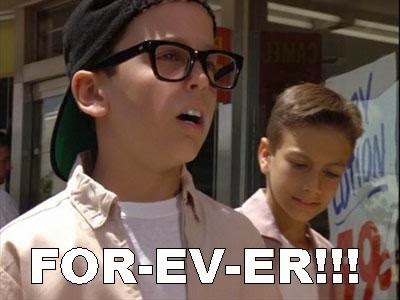I know a few people who have done heart rate training and have seen huge gains from it. I started to read the book by Phil Maffetone called The Big Book of Endurance Training and Racing, which I did not finish. I found the book a tad on the boring side. I can appreciate the science but I always want authors to get to the point. I tend to read fiction more because of that reason. I like a good story.
I was interested in this type of training but wasn’t quite sure how to go about setting it up for myself. Then the ironman came and went and I thought about running with the Pfitziner plan, but again, found myself a bit confused and not sure how to get started to go after goals I wanted. (I also started and did not finish this book. Clearly, I don’t enjoy reading these style books.)
I’ve been working with Coach Jon for about six weeks now. I’m still regaining run strength and speed post ironman and have a long way to go to where I want to be. Hello, Boston Qualifying time.
Coach Jon uses a mix of heart rate training and very specific paced runs. I’d say this week was the first week of a few extra “shake out runs” with non-specific paces. And this was also the first real LSD (long slow distance) heart rate run I’ve ever done.
In working with Coach Jon, I’ve begun using Training Peaks. This is the most science-y running I have ever done. To be honest, it’s a lot to take in and I’m slowly learning what all the numbers, data, and acronyms mean. I’m writing this as a first timer’s approach, so if you’re way advanced feel to skim. (And point out anything I get wrong in the comments!)
Anyway, Training Peaks inputs all your data, including heart rate, and your coach can set up your training “zones” and see what your thresh hold pace is. According to Training Peaks:
“Lactate Threshold Pace, Heart Rate or Power all refer to the maximum effort you’re able to maintain while your body can still remove the lactate acid being used by the muscles. For most trained athletes this is similar to the maximum effort they can maintain for an hour.”
I believe, but am not 100% certain, the threshold pace helps set up the rest of the zones in Training Peaks. Coach Jon uses a seven zone system. So, zone one, is a recovery zone and my zone seven is anaerobic. And then there’s all the zones in between.
On Sunday, I had a run prescribed for 14 miles in zone two, with a max of zone three. I looked at the paces for these zones they looked awfully slow. The notes in TP said to take walk breaks to keep the heart rate in the right zone.
I set out for my run around 6:45 AM and within the first two miles, I knew it was going to be a long 14 miles. I had to take many walk breaks to stay keep my heart rate low(ish) and I kept wondering if Coach Jon really intended for me to run this pace.
When my friends asked me after how the run was I told them it was equal parts enjoyable and awful. I enjoyed the little walk breaks and taking my time, but I got pretty bored and just wanted it to be done. I felt like I was a brand new runner again because I kept having to walk. There’s definitely a bit of an ego thing when you have to stop and walk even though you feel fine to keep running.
As soon as I finished the 14 miles I shot Coach Jon an email. It was something along the lines of that taking “for-ev-er” and was he sure I was supposed to go that slowly?
Coach Jon emailed back that he knew that pace would be painful but was glad I was willing to give it a try. He doesn’t do strict heart rate training because it’s, in his opinion, subjective to other factors, such as heat, humidity, fatigue, hydration, elevation, etc. Whew! I don’t know if I could do that solidly for months at a time. Again, I know there are A LOT of people who have used it and swear by it, but I personally am happy that my current coach uses it sporadically as a tool because there is value in it. Value because, as Jon says, “the zones are accurate to your fitness and by keeping the HR levels low, we know that we are allowing the body to adapt, grow, and change and not just react to the stress being applied.”
I’ve always been a fan of the LSD and I’m sure I’ll learn to like the HR runs when they are on my plan.*.
I didn’t write this to give any advice, just to let you all know what I’ve been up to and what I’m experiencing trying some new approaches as a runner. I was doing the same type of training for a long time and I am really branching out here!
*As always, I’m not a coach, nor am I a professional athlete (I know you are shocked) so get a coach or see a doctor if you need help or are injured.



Glad you posted this and I would be more interested in the actual numbers if you wouldn't mind messaging me. I just saw my GP today to get a referral to a Cardiologist because my HR seems to hit both extremes and training in the prescribed zone is pretty much impossible. I always wear my monitor and have just gone by what I know to be "MY" zones. They are off the charts otherwise.
I've been doing HR training since July and I really like it, but it's definitely not for everyone. The biggest thing is to remember to check your ego at the door.
My heart rate seems to spike very high in the first mile or two and then settle down to reasonable numbers. I learned to ignore the early readings. I agree zone 2 seems painfully slow, but it's about building capillary systems and gaining endurance while minimizing risk of injury. Zone 4 training will build speed, but at higher risk of injury. Also, the body can't hold onto speed gains for long, so this phase is done toward the end of training.
Rick Stiles
What I'm a little surprised about is th at he had you do a specific distance at HR. My normal for the past 2 years of training by MAF is th at HR runs are done by time and pace runs are done at distance.
But I'm also not a coach and am sure there are many ways to use HR training. But if my coach told me to go run that many miles at HR, in would likely quit, because it would literally take all day.
I can totally sympathize because this is exactly what I went through when I first started training by heart rate instead of pace. My new easy/long run pace felt sooooooo sloooooow and my runs took fooorevvvverrrrr. But, after a couple of weeks, I got used to it and even started to enjoy running at that easier effort. (It did help me to go by time and not miles.) I've made a lot of progress by slowing down, and eventually I gradually started to see my pace speeding up at the same low heart rate. So yes – it definitely takes a lot of patience & discipline, but for me, at least, it really has worked. 🙂
Like Rick said, I have crazy HR spikes at the beginning of a run, so, honestly, I run at what seems to be a slow pace. By mile 2, it usually settles down and then I can actually focus on heart rate.
It's been an interesting process, and like a lot of people, I don't love it, but I do think that the information is useful and I've seen it work. For me, it's especially useful on the trainer, where I actually hate to work really hard. The HR stuff keeps me really honest there.